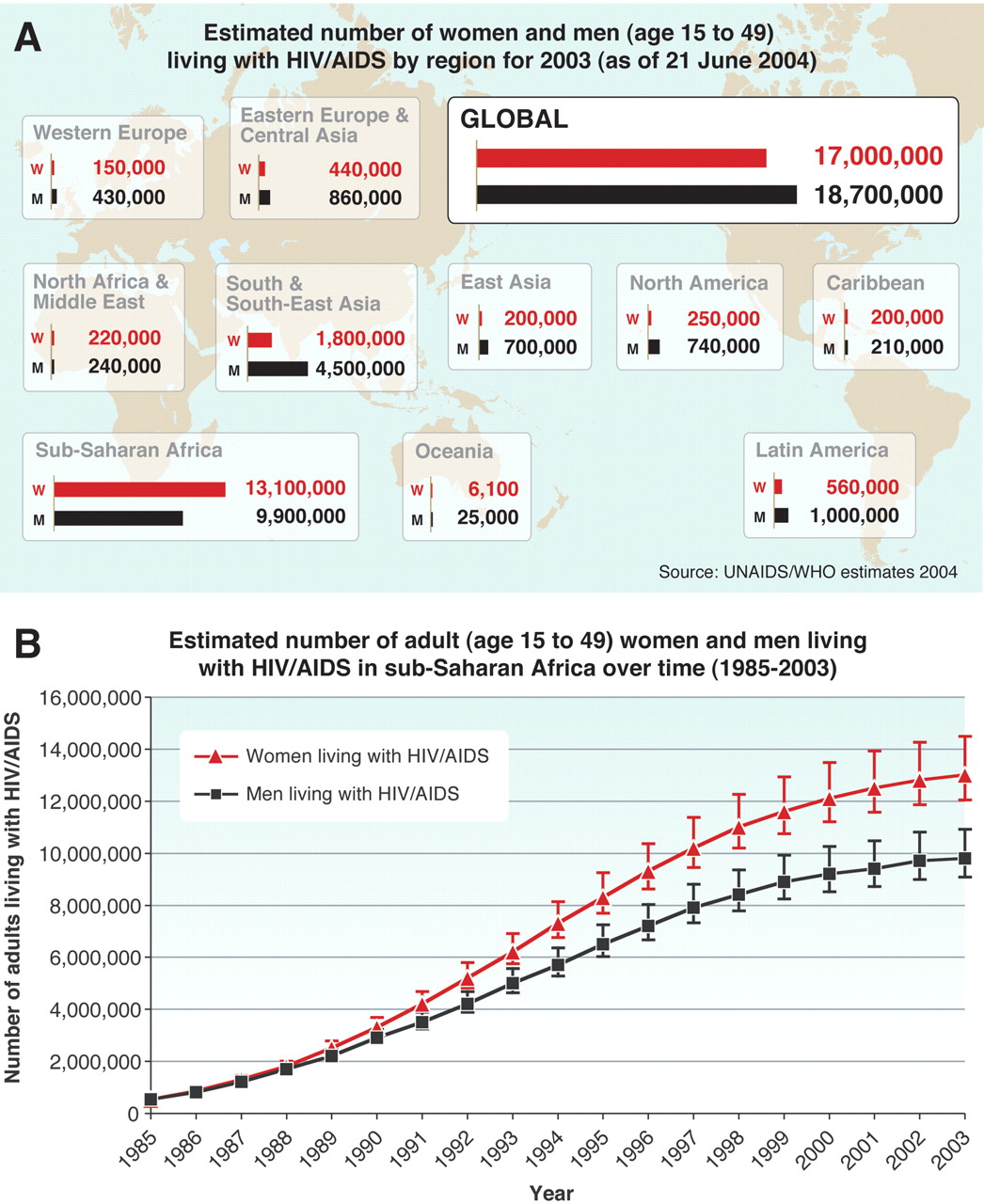HIV Impacts
References:
AIDS was first recognized as a disease in 1981. The year 2003 is the twentieth anniversary of the discovery of HIV as the cause of AIDS (1983).References
- Nature Medicine 9, 839 (2003), A. Fauci, "HIV and AIDS: 20 years of science."
- Science 300, 1713 (2003), Bailes et al., "Hybrid Origin of SIV in Chimpanzees."
- Nature 428, 820 (2004) Worobey et al., "Contaminated polio vaccine theory refuted."
- Nature Medicine 11, 469 (2005), Veazey, R., and Lackner, A., "HIV swiftly guts the immune system."
- Science 308. 1582 (2005). Quinn, T., and Overbaugh, J., "HIV/AIDS in Women: An Expanding Epidemic."
|
In the 20th century, there were two unexpected outbreaks of virally-caused disease. The influenza A pandemic of the winter of 1918-1919 was caused by the re-emergence of an old virus, and was responsible for the death of over 25 million people worldwide, including 550,000 in the US. The world first became aware of another disease outbreak in 1981, the acquired immunodeficiency syndrome (AIDS). The catastrophic potential of this new virally-caused disease may still not have been fully realized. The human immunodeficiency virus (HIV) is now known to have originated from chimpanzees. Transmission from chimps to humans probably occurred while animals were butchered for food in sub-Saharan Africa, with animal blood contaminating wounds of humans. The transmission likely passed unnoticed for a long period of time, but in the last half of the 20th century, accompanied social upheavals led to the outbreak of AIDS. The conditions in Africa that favored transmission included a massive migration from rural areas to urban areas, the breakup of family units due to the human migrations, and changes that favored commercial sex. Increased sexual freedoms, coupled with increased global travel, facilitated the spread of HIV into developed countries. New data suggest that the virus in chimpanzees resulted from a recombination between two simian immunodeficiency viruses, SIVrcm from red-capped mangabeys and SIVgsn from greater spot-nosed monkeys. Both of these primate species are preyed on by chimpanzees. E. Hooper in a book called, The River, suggested that early polio vaccines produced in cultures of primate cells could have been the original source of HIV. This suggestion has made several countries wary of using polio vaccines, limiting efforts to eradicate polio. New studies now show that chimpanzees in the area that were used for early polio vaccines do not contain viruses related to HIV. In addition, the sequence studies of virus indicate that HIV originated at least 30 years before the first polio vaccines were used. Scientists regard these results as conclusive proof that polio vaccines could not be a source of HIV. Scope of the epidemic
People living and infected with HIV
In the North America, an estimated 940,000 people are infected with HIV. Through 1998, there have been 688,200 cumulative cases of AIDS and 410,800 deaths. There are an estimated 40,000 new HIV infections per year. Between 1985 and 1998, the proportion of AIDS reported among women and adolescent girls tripled in the US, from 7% to 23%. Facts about AIDS(from UNAIDS 1999 World AIDS Campaign and Nature Insight review articles, Nature 410, 968 (01).)
|
Impacts | Immume response | Immunology and HIV | Treatment | Test yourself
The Biology Project
The University of Arizona
June 21, 2004
Contact the Development Team
http://biology.arizona.edu
All contents copyright © 2000. All rights reserved.
